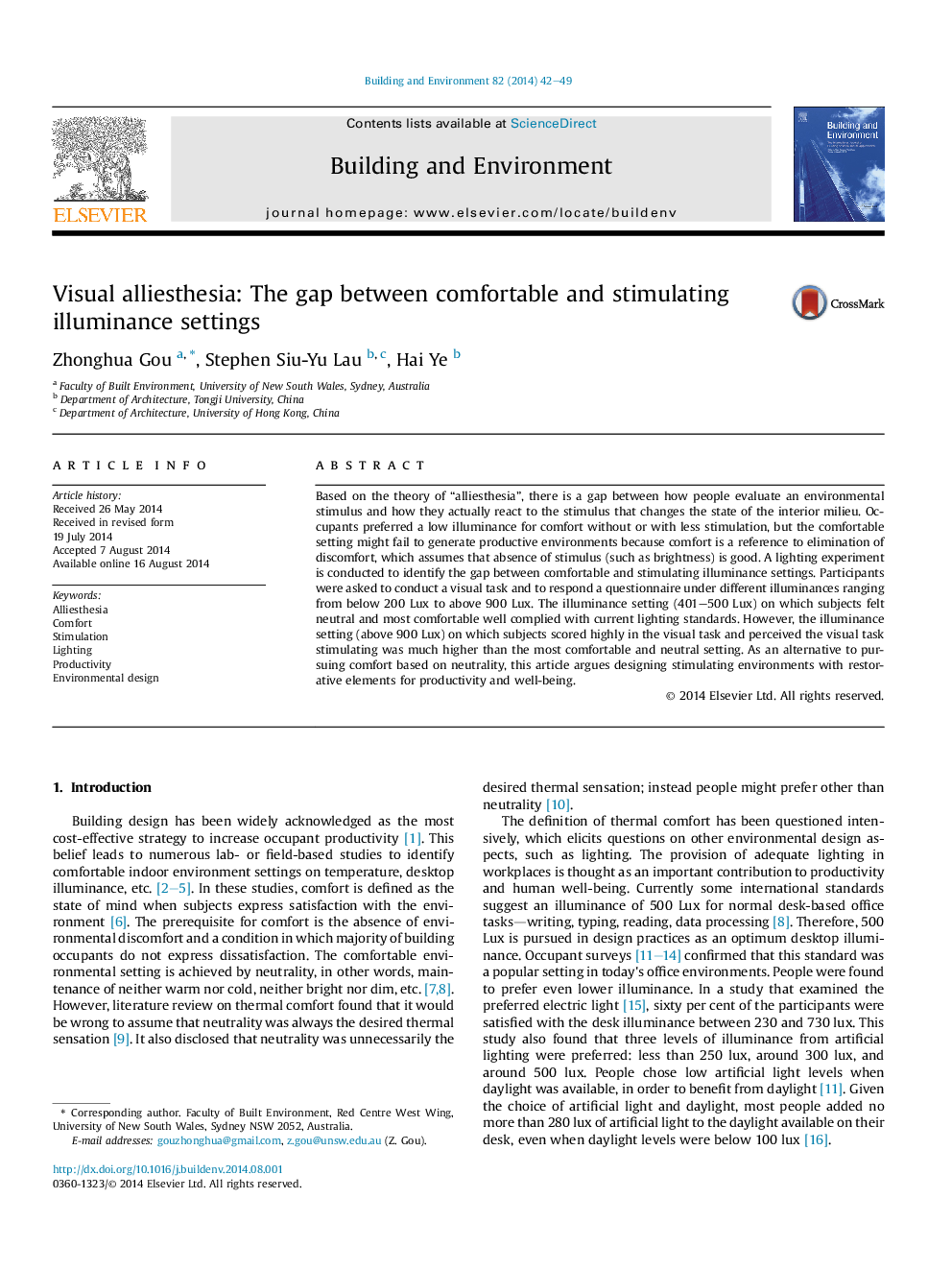| Article ID | Journal | Published Year | Pages | File Type |
|---|---|---|---|---|
| 6700115 | Building and Environment | 2014 | 8 Pages |
Abstract
Based on the theory of “alliesthesia”, there is a gap between how people evaluate an environmental stimulus and how they actually react to the stimulus that changes the state of the interior milieu. Occupants preferred a low illuminance for comfort without or with less stimulation, but the comfortable setting might fail to generate productive environments because comfort is a reference to elimination of discomfort, which assumes that absence of stimulus (such as brightness) is good. A lighting experiment is conducted to identify the gap between comfortable and stimulating illuminance settings. Participants were asked to conduct a visual task and to respond a questionnaire under different illuminances ranging from below 200 Lux to above 900 Lux. The illuminance setting (401-500 Lux) on which subjects felt neutral and most comfortable well complied with current lighting standards. However, the illuminance setting (above 900 Lux) on which subjects scored highly in the visual task and perceived the visual task stimulating was much higher than the most comfortable and neutral setting. As an alternative to pursuing comfort based on neutrality, this article argues designing stimulating environments with restorative elements for productivity and well-being.
Related Topics
Physical Sciences and Engineering
Energy
Renewable Energy, Sustainability and the Environment
Authors
Zhonghua Gou, Stephen Siu-Yu Lau, Hai Ye,
